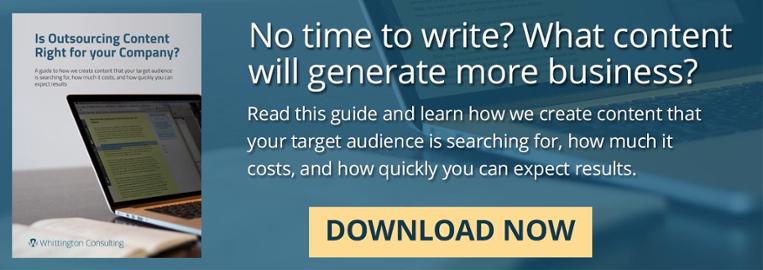When a plane takes off for a flight, it doesn't leave without a flight plan. Similarly, you shouldn't dive into inbound marketing without a content plan. While 93 percent of B2B marketers use content marketing, only 44 percent have a content strategy.
With this in mind, it's evident that developing an effective content strategy can go a long way toward setting your business apart from the competition and helping you succeed. If you're unfamiliar with strategy development, here are tips to help you get started.
Developing a Great Content Strategy
We know you want your content strategy to be effective, so here are some things that you may want to consider to make it the best it can be. Take these things into account:
The Company Business Plan
When developing a content strategy, consider the goals your executive team has for your business. These certainly can change from year-to-year, so keep those lines of communication open with your executive team and be flexible. How can your content strategy be tailored specifically towards helping your business achieve goals? How about sales goals? Lead goals? Customer service goals?
Your Target Persona(s)
If you don't have target buyer personas, create one now. If you do, your plan should seek to speak directly to those people and appeal to them at different stages of the buyer's journey. In most cases, it's wise to develop two or three personas in order to ensure you're appealing to your entire audience.
See also: Here's an article about how you can put together target personas for your company.
Your Distribution Channel
Your content plan should consider your distribution channels and tailor content to the format of each platform. Some examples:
- Fact-focused content can be broken up into individual Tweets while in-depth topics can be serialized for blog posts.
- Content should include visuals, because when you or someone else shares your content on social media, you'll want an attention-grabbing visual.
- A whitepaper that you give away at trade shows can be summarized as a blog post, or edited and offered as a download on your website.
- One client of ours has a radio show each week where he serves as a subject matter expert. These shows can be recorded as a podcast or summarized as blogs.
If your aim is to gain wider awareness of your product or service, you'll also need to consider outreach to industry associations, experts, journalists, etc. that might help you distribute your content. You can also pay for distribution via online advertising, content sponsorships or purchased email lists.
The Purpose of Your Content
It's impossible to develop an effective strategy without an idea of the type of content you want to produce. In order to write valuable copy, you need to come up with content ideas that support your goals.
- To help sales close more deals, you may want to create case studies that reinforce your value proposition.
- To attract more people to your website, increase the frequency of your blogging.
- To generate more leads, create long-form content and carve out some time to optimize your website with the purpose of getting people to the content you've created.
- To increase social sharing, create visual content that offers tips and other actionable advice.
Your Company's Story
Every company has a story. The words on your website, your sales presentations, and social media should take into account where your business came from, what it seeks to do, and how it's going to get there. This will help you communicate your message and differentiate your business from the competition.
Content Design
With all the talk about writing content, it's not difficult to overlook that content needs to be designed, too, especially if you're putting together a whitepaper, ebook or downloadable content. A skilled graphic designer will ensure that your content puts its best foot forward when it hits the inbox or screen of your prospect.
Other Resources
- For further help in developing your content plan, Moz offers a template for a content strategy.
- Check out NewsCred's Slideshare presentation on How to Build a Content Marketing Strategy.
- If you're curious to learn more about inbound and content marketing, consult our recorded webinar, "Content Marketing Best Practices."









